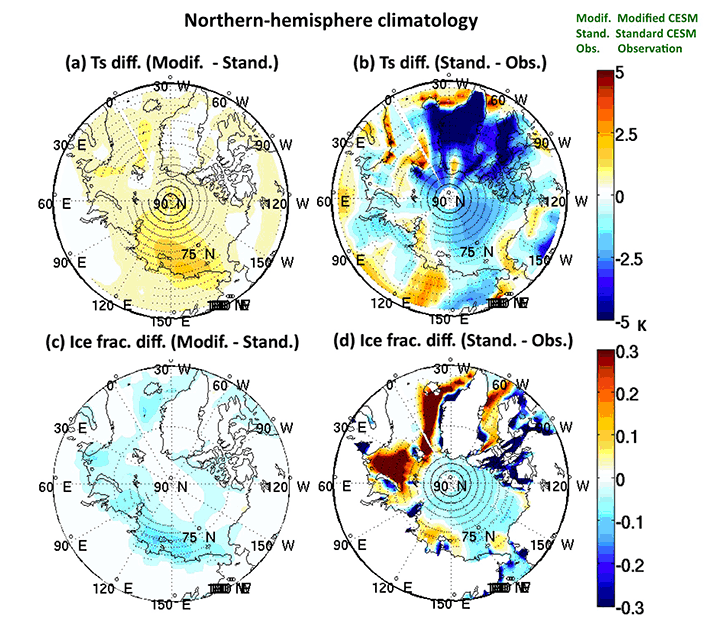Reducing the biases in simulated polar climate by incorporating realistic surface spectral emissivity into the global climate model
Surface longwave emissivity can be less than unity and vary significantly with frequency. The emissivities of water, ice, and bare land all exhibit different spectral dependence, for both the far-IR and mid-IR bands. However, most climate models still assume blackbody surface in the longwave (LW) radiation scheme of their atmospheric modules. This study incorporates realistic surface spectral emissivity into the RRTMG_LW, the LW radiation scheme in CAM, which is the atmospheric component of the NCAR Community Earth System Model (CESM) version 1.1.1. Then we evaluate its impact on simulated climatology, especially for the polar regions. By ensuring the consistency of the broadband longwave flux across different modules of the CESM, the TOA energy balance in the simulation can be attained without additional tuning of the model. While the impact on global mean surface temperature is small, the surface temperature differences in Polar Regions are statistically significant. The mean surface temperature in Arctic in the modified CESM is ~1.5K warmer than that in the standard CESM, reducing the cold bias that the standard CESM has with respect to observations. Accordingly the sea ice fraction in the modified CESM simulation is less than that in the standard CESM simulation by as much as 0.1, which significantly reduces the positive biases in the simulated sea ice coverage by the CESM. The largest sea-ice coverage difference happens in August and September, when new sea ice starts to form. The similar changes can be seen for the simulated Antarctic surface climate as well. In a nutshell, incorporating realistic surface spectral emissivity helps improving the fidelity of simulated surface energy budget in the polar region, which leads to a better simulation of the surface temperature and sea ice coverage.

